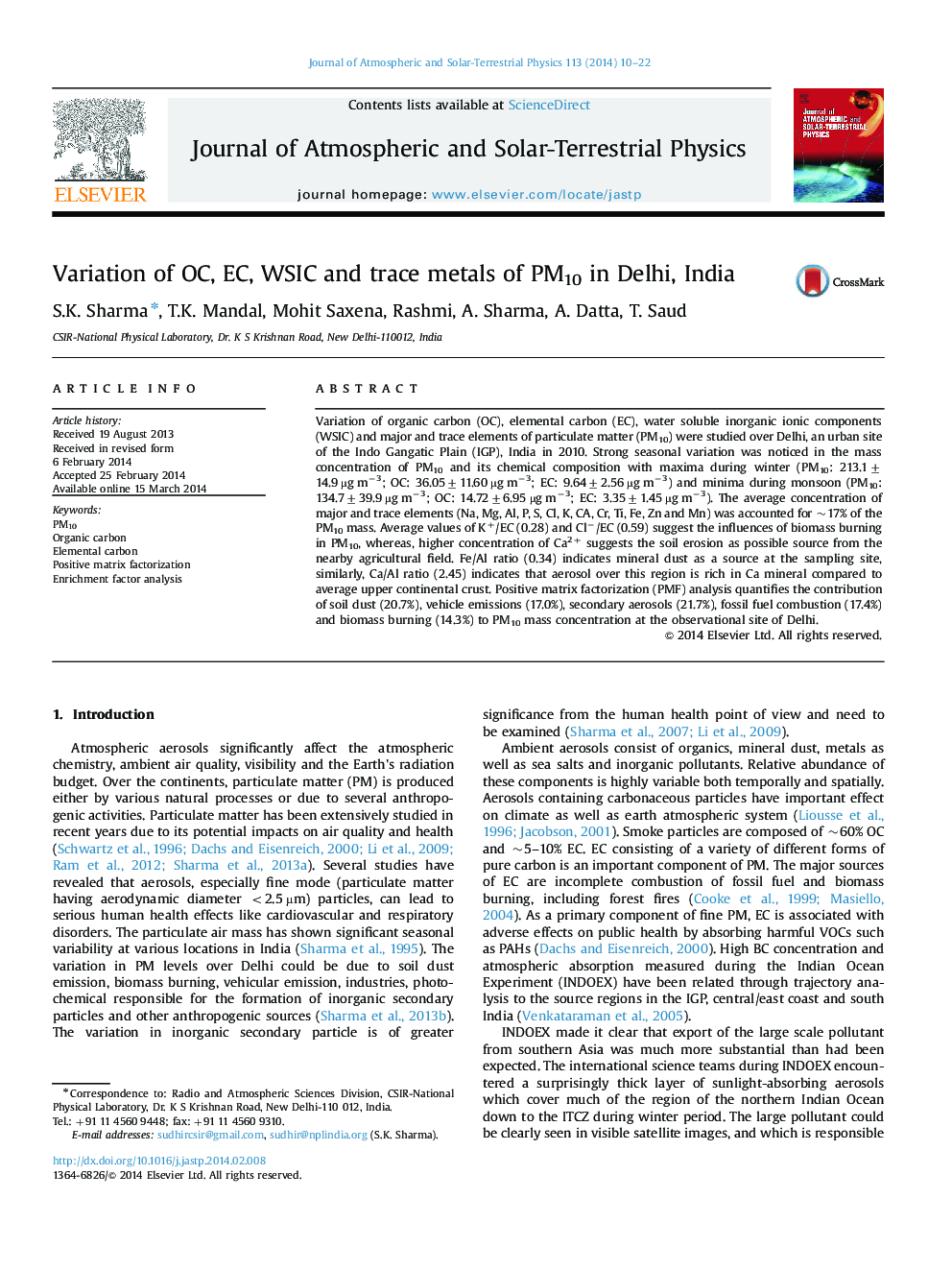| Article ID | Journal | Published Year | Pages | File Type |
|---|---|---|---|---|
| 1776631 | Journal of Atmospheric and Solar-Terrestrial Physics | 2014 | 13 Pages |
•Seasonal variations in concentration of organic and elemental carbon were recorded.•WSIC and trace metals of PM10 mass accounted for 29% and 17%, respectively.•Soil dust, vehicular emission, secondary aerosol are major sources of PM10 in Delhi.
Variation of organic carbon (OC), elemental carbon (EC), water soluble inorganic ionic components (WSIC) and major and trace elements of particulate matter (PM10) were studied over Delhi, an urban site of the Indo Gangatic Plain (IGP), India in 2010. Strong seasonal variation was noticed in the mass concentration of PM10 and its chemical composition with maxima during winter (PM10: 213.1±14.9 µg m−3; OC: 36.05±11.60 µg m−3; EC: 9.64±2.56 µg m−3) and minima during monsoon (PM10: 134.7±39.9 µg m−3; OC: 14.72±6.95 µg m−3; EC: 3.35±1.45 µg m−3). The average concentration of major and trace elements (Na, Mg, Al, P, S, Cl, K, CA, Cr, Ti, Fe, Zn and Mn) was accounted for ~17% of the PM10 mass. Average values of K+/EC (0.28) and Cl−/EC (0.59) suggest the influences of biomass burning in PM10, whereas, higher concentration of Ca2+ suggests the soil erosion as possible source from the nearby agricultural field. Fe/Al ratio (0.34) indicates mineral dust as a source at the sampling site, similarly, Ca/Al ratio (2.45) indicates that aerosol over this region is rich in Ca mineral compared to average upper continental crust. Positive matrix factorization (PMF) analysis quantifies the contribution of soil dust (20.7%), vehicle emissions (17.0%), secondary aerosols (21.7%), fossil fuel combustion (17.4%) and biomass burning (14.3%) to PM10 mass concentration at the observational site of Delhi.
